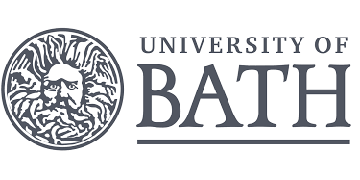University of Bath: Revolutionary ‘EarSwitch’ project to be scaled up with new funding
A team of Bath researchers and a local GP are celebrating having been awarded over £1.5 million in funding to develop the ‘EarSwitch’ – the revolutionary device designed to enable people with conditions such as Motor Neurone Disease (MND) to communicate using a tiny, hidden ear muscle.
Since news broke in May 2021 about the team’s work in developing the EarSwitch there has been widespread interest from right around the world in the project. The new funding is a major boost for the team, which they hope will now enable them to take their work to the next level, refining and ultimately rolling out the product to users.
The EarSwitch is a small, earbud-like device. Inserted in the ear, it uses an in-built camera to pick up movements of a tiny hidden muscle known as the tensor tympani allowing users to operate an assistive keyboard. (An assistive screen scans letters and words which users can select by tensing the ear muscle).
Although many people may not be aware of their tensor tympani muscle, initial research from the team found that significant numbers are able to use it voluntarily, with the possibility it can be trained. If you yawn and notice it is harder to hear or feel a fullness or rumbling sensation, that is your tensor tympani clicking into action.
The EarSwitch technology allows people who cannot use traditional input devices, such as a mouse or keyboard, to interact with a computer. With degenerative conditions such as MND, control of the tensor tympani muscle is thought to be preserved for longer than other muscles, and so the team hope the technology can support users for longer.
In addition to harnessing the muscle to help people with neurological conditions, the team also believe applications could extend to ear controls for mobile phones, or for gaming. The device is the brainchild of former Somerset-based GP, Nick Gompertz, who has partnered with experts from Bath across computer science, electronic engineering, and health.
Dr Nick Gompertz said: “I have always believed passionately in the huge potential of the EarSwitch for people living with degenerative conditions such as MND and the transformative effects it could have in enabling them to communicate for longer.
“Working with the University of Bath has allowed us to demonstrate widely that the EarSwitch presents a massive opportunity to help people communicate. Without their support and publicity which has reached around the world, we would not have gained the traction to secure these two significant funding streams from NIHR.”
The team at Bath includes Dr Ben Metcalfe and Dr Dingguo Zhang (Electronic & Electrical Engineering), Dr Dario Cazzola and Dr Rich Stevenson (Health), and Dr Chris Clarke (Computer Science).
The collaboration with Nick Gompertz is thanks to the University’s Digital Innovation Business Acceleration Hub, funded by ERDF, and the SETsquared Scale Up programme.
The first funding award is a £1.45 Million NIHR Product Development Award (PDA). This will help the team develop EarSwitch into a product with appropriate regulatory approval as a medical device. Additional partners for this project include a manufacturing consortium and the Portsmouth Technology Trials Unit.
The second award is for £70,000 from NIHR Invention for Innovation (i4i Connect). This project will explore the use of EarSwitch as a means to control an upper-limb exoskeleton or prosthesis. It will involve working with OpenBionics, a local manufacturer of 3D printed prostheses.
Dr Dario Cazzola from the University’s Department for Health explained: “This is a great achievement for EarSwitch and demonstrates the importance of the work carried out during the previous NIHR i4i Connect grant. I am truly delighted that we can now bring this idea forward and test the comfort, usability, and functionality of a new device, purposely designed to enable people with neuro-disability to communicate.”
Dr Ben Metcalfe from the University’s Department of Electronic & Electrical Engineering added: “I am delighted that EarSwitch has received significant follow-on funding from NIHR.
“This funding will enable us to develop the technology into a commercial product and drive clinical impact. It will also allow us to explore the wider use cases for the technology across the assistive technology sector, supporting those most in need by enabling communication, improving device control, and enhancing quality of life.”

